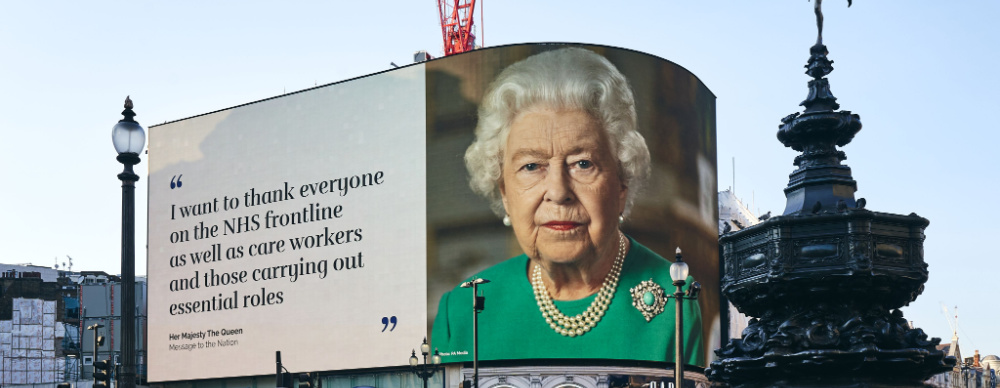From the black and white television broadcast of her coronation to the sharing of afternoon tea with a CGI version of the nation’s favourite bear, the 70-year reign of the late Queen Elizabeth II saw some incredible changes in the media and technology landscape.
During the period 1952 until 2022, Queen Elizabeth witnessed the space race, colour television, computers, the internet, mobile phones, smartphones, digital music, social media, cloud computing, crypto currency and the metaverse.
Not only did she witness these significant changes, but Her Majesty actively embraced them, recognising the personal connection that advanced technology could bring. Her first Christmas broadcast was conducted from her study at Sandringham House in 1952 and was transmitted by radio as was tradition. The promise of a full-length broadcast of the Queen’s coronation in 1953, saw sales and rentals of televisions explode, with estimates suggesting that the ceremony was broadcast by the BBC to an average of 17 people per set.
In 1957, four years later, the festive message was broadcast on television for the first time and has been an annual event since. The Queen stating: ““Today is another landmark because television has made it possible for many of you to see me in your homes on Christmas Day. My own family often gather round to watch television as they are at this moment, and that is how I imagine you now. I very much hope that this new medium will make my Christmas message more personal and direct.”
Television made the world smaller. Suddenly the Queen could reach the citizens of the United Kingdom, The Commonwealth and beyond at the same time, in a visual medium. A theme that was picked up in June 1969, when the documentary Royal Family, revealing details of the private lives of the Royals for the first time, was broadcast to a global audience of 350 million.
As with any technology, there are benefits and there are downsides, and the Royal Family was not exempt from the double edge sword of bearing all on television, the Princess Diana/Martin Bashir and Prince Andrew/Emily Maitlis interviews being examples of note.
Throughout her reign, Queen Elizabeth wisely warned that technology can only be of benefit it is used for good and the benefit of the world’s citizens.
In her 1962 Christmas broadcast, she spoke of Telstar, the first communications satellite that had relayed live television pictures across the Atlantic.
“The wise men of old followed a star: modern man has built one. But unless the message of this new star is the same as theirs, our wisdom will count for nought. Now we can all say the world is my neighbour and it is only in serving one another that we can reach for the stars.”
This message was reinforced in her broadcast in 1983, the year that Apple introduced its personal computer, when the Queen stated: “”Yet in spite of these advances, the age-old problems of human communication are still with us,” she said. “We have the means of sending and receiving messages, we can travel to meetings in distant parts of the world, we can exchange experts; but we still have difficulty in finding the right messages to send, we can still ignore the messages we don’t like to hear, and we can still talk in riddles and listen without trying to comprehend. Perhaps even more serious is the risk that this mastery of technology may blind us to the more fundamental needs of people. Electronics cannot create comradeship; computers cannot generate compassion; satellites cannot transmit tolerance.”
In fact, the Queen’s Christmas broadcast was to become a yardstick for technology’s progress. In 1997, it was broadcast on the internet for the first time and in 2012 it was broadcast in 3D.
Over the years the Queen continued to promote the power of technology: sending her first tweet in 2014 and her first Instagram post in 2019.
One year later in 2020, as the global pandemic forced lock downs, the Queen joined the rest of the world in adapting to the use of video conferencing to communicate. Her Majesty and the Princess Royal joined four carers and the CEO of the Carers Trust on a video call, to mark Carers Week. It was a first for the then 94-year-old’s long reign and the monarch was last to join the call and first to leave – a formal etiquette of royal engagements that Buckingham Palace decided to preserve.
Two years later, and as the world mourns the loss of one of its greatest ever servants, the Queen’s death as in life, continued her incredible relationship with technology. The BBC stated that the viewing figures for her funeral were amongst the highest of all time. “The majority of the UK public – 32.5 million – turned to BBC coverage of The State Funeral of HM Queen Elizabeth II. Her Majesty The Queen lying in state was streamed 25 million times across BBC online.”
Everyone at vXtream would like to extend our heartfelt sympathies and condolences with all the members of the Royal Family at this very sad time.
Image Copyright Shutterstock



Comments are closed.